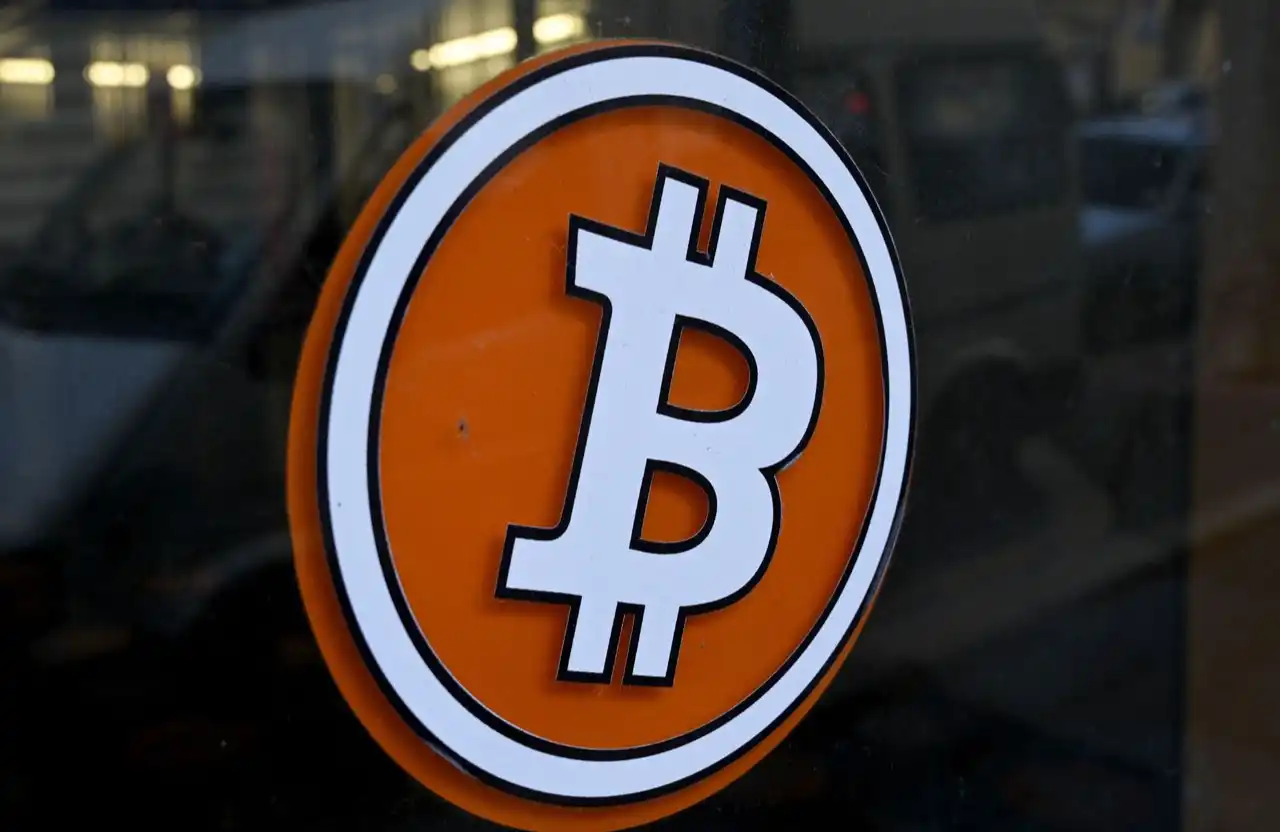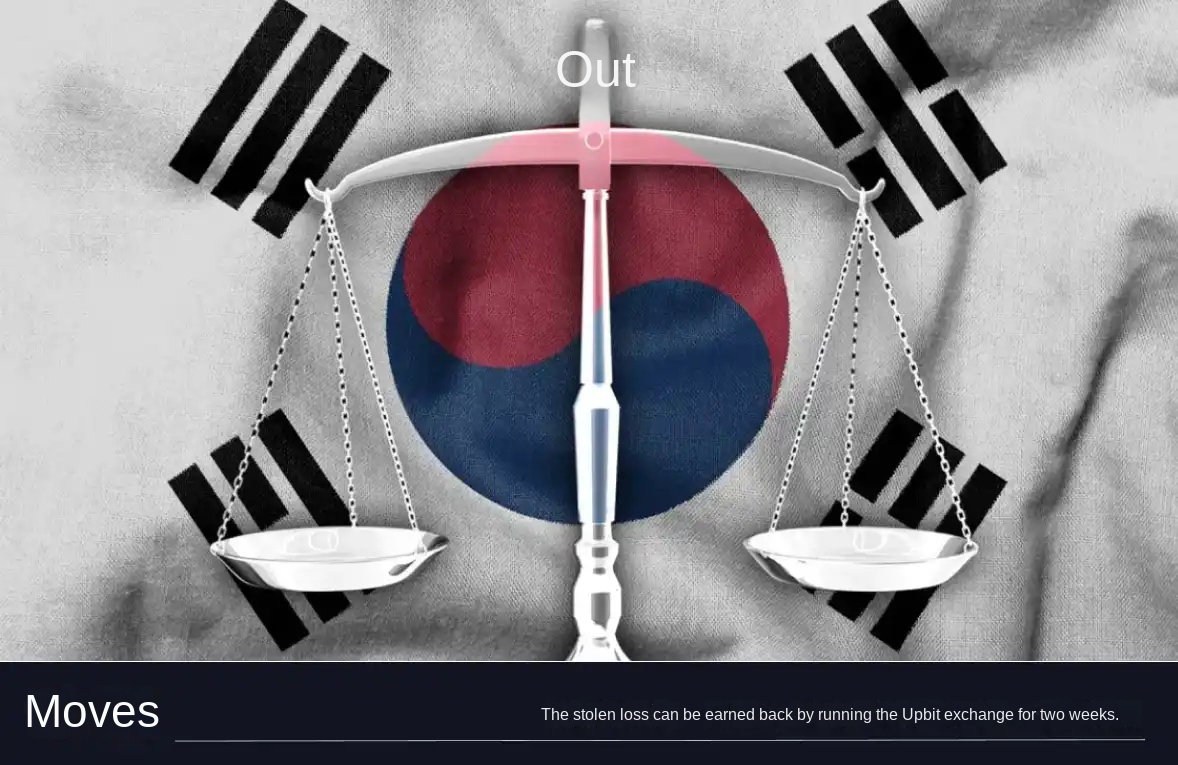A Silent Arbiter Profiting on Polymarket
After receiving a $2 billion investment, Polymarket is now valued at $90 billion, making it one of the highest funded projects in the Crypto space in recent years.
Amidst rumors of an IPO+IDO+Airdrop, let's first look at an interesting set of data: If your PNL exceeds $1000, you enter the top 0.51% of wallets; with a trading volume over $50,000, you belong to the top 1.74% of whales; and if you complete over 50 trades, you surpass 77% of users.

However, this data also implies that in this fertile ground of Polymarket, there are actually not many who have truly been consistently sowing and reaping.
With ICE's strategic investment materializing, Polymarket's liquidity, user base, and market depth are all rapidly growing. More funds pouring in signify more trading opportunities; more retail participation, more market imbalances; more market types, more arbitrage space.
For those who know how to truly make money on Polymarket, this is a golden age. Most people view Polymarket as a casino, but smart money sees it as an arbitrage tool. In the upcoming in-depth article, BlockBeats interviewed three senior players on Polymarket to dissect their moneymaking strategies.
Endgame Sweep as a New Financial Instrument
"For large orders above $10,000 on Polymarket, around 90% of the executed prices are above 0.95," said veteran player fish straightforwardly.
In this prediction market of Polymarket, a strategy called "Endgame Sweep" is very popular.
The strategy is simple: when the outcome of an event is almost certain, and the market price has surged to above 0.95, even close to 0.99, you buy at that price and patiently wait for the event to settle, capturing those last few points of certain profit.
The core logic of the Endgame Sweep is summarized in four words: time in exchange for certainty.
When an event has occurred, such as a clear election result or a completed sports event, but the market has not settled officially, the price often hovers around close to 1 but not quite there. Entering at this point, theoretically, as long as you wait for settlement, you can surely capture the last few points of profit.
“Many retail investors can't wait for settlement,” Fish explained to the rhythmic BlockBeats, “They are eager to cash out to place the next bet, so they will sell directly at a price between 0.997 and 0.999, leaving arbitrage space for whales. Although each transaction only earns a 0.1% profit, with a large enough capital and high frequency, cumulatively, it is still a considerable income.”
However, just as all investments carry risks, tailing also is not risk-free “brain-dead investing.”
“The biggest enemy of this strategy,” Fish shifted the conversation, “is not market volatility, but black swan events and whale manipulation.”
Black swan risk is a risk that tailing players must be vigilant about at all times. What is a black swan? It refers to those seemingly certain events that suddenly experience a dramatic turnaround. For example, a game that seems to have ended but is later judged invalid by the referee; a political event that seems settled but suddenly a scandal erupts, overturning the result. Once these low-probability events occur, the chips you bought at 0.99 instantly turn into waste paper.
“The so-called black swan events that can reverse are basically manipulated by whales,” Fish continued to explain, “Whales' strategy is generally like this: for example, when the price is near 0.99, suddenly use a large order to slam the price to 0.9, while creating panic; setting the tone in the comments section and on social media, spreading information that a reversal might happen, amplifying the panic of retail investors; after retail investors panic-sell, eating back the chips at a low position; after the event settles, these whales not only earn the difference between 0.9 and 1.00 but also take the money that retail investors should have earned.”
This is the complete loop of whale manipulation.
Another experienced player Luke (@DeFiGuyLuke) added an interesting detail to this loop: “The Polymarket comments section is particularly readable. I think this phenomenon is quite special and hard to see in other products.”
People will write a lot of evidence to prove their point, but in fact, many people also know that you can unify everyone's direction. So manipulating public opinion on Polymarket becomes very easy.
This has also become an opportunity for Luke to start a business now: “When I used Polymarket before, I found an interesting phenomenon—you look at the content on Twitter, no one wants to read it, right? It's all nonsense and not real. Most people usually don’t talk much. But if you look at Polymarket's comment section, it's fun, even though they may only bet a few tens or a hundred dollars, not much money, but they write lengthy essays there.”
「You will find this type of content particularly interesting. So at that time, I thought that the Polymarket comment section was really well done.」 It was based on this observation that Luke founded a product called Buzzing: allowing anyone to create markets on any topic. After everyone places their bets, they can comment, and these comments will form a feed, distributing content to the market.
Now, coming back to the question, since there is a manipulated black swan risk in winding up positions, does that mean you can't play?
「Not exactly. The key is risk control and position management. For example, I only take up to 1/10 of my position in each market,」 fish added: 「Don't put all your funds on one outcome, even if that outcome seems 99.9% likely to win. Choose markets that are about to settle (within a few hours) and have a price above 0.997, so the black swan's window is shorter.」

Market about to end as displayed on polymarketanalytics
Arbitrage Opportunity Less Than 100%
On Polymarket, there is an address that turned $10,000 into $100,000 in six months, participating in over 10,000 markets.
Not through gambling on outcomes or insider information, but through a seemingly simple yet technically challenging arbitrage strategy — capturing opportunities where the sum is less than 100% in multi-outcome markets.
The core logic of this gameplay is elegantly astonishing: in a multi-outcome market with only one winner, if the sum of all outcomes is less than 1 dollar, you buy one unit of each outcome. You will inevitably receive 1 dollar upon settlement. The price difference between cost and revenue is your risk-free profit.
It may sound a bit hard to grasp like this. Let's use a specific example to explain. Suppose there is a market about the "Fed decision in July," with four trading options:
Cut interest rates by 50+ basis points: Price $0.001 (0.1%);
Cut interest rates by 25+ basis points: Price $0.008 (0.8%);
Invariant: Price $0.985 (98.5%);
Rate Hike of 25 Basis Points: Price $0.001 (0.1%)
Adding up these four prices: 0.001 + 0.008 + 0.985 + 0.001 = $0.995. What does this mean? You spend $0.995 to buy one unit of each option. After settlement, one option will win, and you will receive $1. Profit is $0.005, with a return of 0.5%.
"Don't underestimate this 0.5%. If you invest $10,000, you can earn $50. Do dozens of trades a day, and the annual return is astonishing. And this is risk-free arbitrage. As long as the market settles normally, you will definitely profit," Fish said.
Why does this arbitrage opportunity exist?
In a multi-option market, the order book for each option is independent. This leads to an interesting phenomenon:
Most of the time, the sum of the probabilities of all options is greater than or equal to 1 (this is the normal state as market makers earn the bid-ask spread). However, when retail traders trade on a single option, it only affects the price of that specific option, and prices of other options do not adjust synchronously. This results in a brief market imbalance — where the sum of probabilities of all options is less than 1.
This time window may be only a few seconds, or even shorter. But for arbitrageurs running monitoring scripts, this is a golden opportunity.
"Our bot continuously monitors the order book of all multi-option markets 24/7," Fish explained. "Once it identifies that the sum of probabilities is less than 1, it immediately places orders through the program to buy all options, locking in profit. Once the bot system is set up, it can monitor thousands of markets simultaneously."
"This strategy is somewhat similar to Miner Extractable Value (MEV) atomic arbitrage in cryptocurrency," Fish continued. "Both exploit short-term market imbalances, use speed and technology to front-run arbitrage ahead of others, and then allow the market to rebalance."
Unfortunately, this strategy seems to have been monopolized by several bots, making it challenging for ordinary individuals to earn significant profits through this strategy. A risk-free arbitrage that theoretically everyone can do has practically become a war among a few professional bots.
"Future competition will become increasingly fierce," Fish said. "Depending on who has servers closer to the Polygon node, whose code execution efficiency is higher, who can monitor price changes faster, and who can submit transactions and confirm on-chain faster."
Essentially, This Is Also Market Making
At this point, many people may have already realized that the arbitrage strategies mentioned earlier are essentially performing the role of a market maker.
The job of a market maker is simply this: depositing USDC into a specific market pool, essentially placing both a bid for Yes and a bid for No, providing a counterparty for all buyers and sellers. The deposited USDC will be converted into corresponding contract shares based on the current Yes/No ratio. For example, at a 50:50 price, depositing 100 USDC will be split into 50 shares of Yes and 50 shares of No. As the market fluctuates, your Yes/No inventory ratio will deviate from the optimal state (e.g., 50:50). Excellent market makers will continuously rebalance their positions through active trading or fund adjustments to lock in arbitrage opportunities.
So from this perspective, these arbitrage bots are actually acting as market makers—they continuously rebalance the market through arbitrage behavior, making the price more reasonable and liquidity better. This is beneficial to the entire Polymarket ecosystem. Therefore, Polymarket not only does not charge fees but also provides rewards to makers (order placers).
"From this perspective, Polymarket can actually be considered very friendly to market makers," Fish said.
"From a data perspective, market makers on Polymarket should have earned at least $20 million in the past year," Luke revealed to Odaily BlockBeats two months ago. "We haven't calculated the data after a few months, but it is definitely more."
"Specific to the revenue model, based on market experience, a relatively conservative estimate is: 0.2% of the volume," Luke continued.
Suppose you provide liquidity in a certain market, and the monthly trading volume is $1 million (including the orders you filled on both the buy and sell sides), then your expected profit is approximately: $1 million × 0.2% = $2,000
This return rate may not seem high, but the key is that this is a relatively stable income, unlike speculative trading with its ups and downs. Moreover, if you scale up to increase earnings, 10 markets would be $20,000, 100 markets would be $200,000, and if you factor in platform LP rewards and holding APY, the actual earnings would be higher, "but the main income still comes from the spread of market making and the rewards given by Polymarket, these two parts."
Interestingly, compared to other arbitrage strategies that have been exploited to the extreme by bots, Luke believes that the competition in the current state of being a liquidity provider is not very intense.
“Now, trading tokens is definitely a highly competitive space, and it can get down to things like hardware. However, Polymarket's market competition is not very fierce. So, the current competition is still focused on strategy rather than speed.”
This means that for players with some technical ability and capital, being a liquidity provider may be an underestimated opportunity. And as Polymarket achieves a $9 billion valuation and continues to grow its liquidity, the earning potential for liquidity providers will only increase. Getting in now may not be too late.
2028 Election Arbitrage
During the conversation with BlockBeats, Luke and Tim both mentioned the potential arbitrage opportunities for liquidity providers, especially as Polymarket launched a 4% yield farming market for the 2028 U.S. election.
With three years to go until the 2028 election, Polymarket has already begun its preparations. To seize market share and attract early liquidity, the platform is offering a 4% annualized return.
“Many people may think that at first glance, a 4% APY is very low in the crypto world, and platforms like AAVE offer higher APY. However, I think Polymarket is doing this because they are competing with Kalshi.” Luke explained, “Kalshi has long provided U.S. Treasury yield on account balances, which is actually very common in traditional financial products. For example, Interactive Brokers, where even if you don't actively buy bonds or stocks, you can still earn a return. These are very common features in traditional financial products.”
“Kalshi is a Web2 product, so it's easy to implement.” Luke continued, “But Polymarket has never done this because most of its funds are in the protocol, making it more challenging to implement. So, in terms of this yield farming feature, Polymarket was a bit behind Kalshi.”
This disadvantage is even more apparent in a long-term market like the 2028 election. “Just think, you put your money in now, and you have to wait three years for settlement. During these three years, your money is idle, which can be a bit frustrating, right? So, they are introducing this annualized reward to bridge the gap with their competitors. It should be their self-subsidy.” Luke remarked.
“However, I think the goal of the liquidity provider is definitely not this 4% annualized return; this annualized return is mainly for ordinary users.” Through this subsidy, users' transaction costs have also been somewhat reduced, which is also a very good thing for those who have been generating a high trading volume and number of transactions on Polymarket for a long time, as studios are still very sensitive to cost and revenue calculations.
Tim's research in this area is also very in-depth. “If you carefully study the details of this mechanism, you will find that there is a much larger arbitrage opportunity hidden for the liquidity provider than just 4%.”
“The reward given by Polymarket is a detail that many people have not noticed; each option also provides an additional $300 daily LP reward.” Tim continued to elaborate: In addition to the 4% holding annualized return, Polymarket will also provide additional rewards to liquidity providers. If you provide liquidity in this market—meaning you place both buy and sell orders simultaneously to help maintain market depth—you can share in this $300 daily LP reward pool.
Tim did a quick calculation. Assuming the market “Who will be the President in the 2028 election?” has 10 popular options, with each option receiving a $300 LP reward daily, the total LP reward pool would be $3,000 per day. If you hold a 10% liquidity share, you can earn $300 daily, which amounts to $109,500 per year.
“This is just the LP reward. If you add the profit from market-making spreads, plus the 4% holding annualized compounding, the triple income stack can easily exceed 10%, even over 20%.”
“If you ask me if market-making for the 2028 election is worth it, my answer is: if you have the technical expertise, the capital, and the patience, this is a seriously underestimated opportunity. But to be honest, this strategy is not suitable for everyone.”
Tim said, “It is suitable for those conservative players with a certain amount of capital (at least tens of thousands of dollars); suitable for tech-savvy players who can build automated market-making systems; suitable for long-term players who are not seeking quick wealth and are willing to exchange time for stable income; also suitable for players who have a certain understanding of U.S. politics and can judge market trends.
But it is not suitable for players with too little capital (a few thousand dollars); not suitable for those seeking short-term wealth, lacking patience for four years of speculation; not suitable for those who completely do not understand U.S. politics, cannot judge market rationality, and novices; also not suitable for players who need liquidity, may need money at any time.”
News Trading on Polymarket
While delving into Polymarket's market data, Luke and the team discovered a phenomenon that defied common knowledge.
“People used to say that Polymarket users were very smart, with great foresight, right? It was as if, even before the event had concluded, everyone had already predicted the outcome through trading,” Luke said. “But in reality, it's quite the opposite.”
“On Polymarket, most users are actually dumb money, quite inexperienced,” Luke said with a laugh. “In most cases, people misjudged the event. It's only after the event has results and there's news that many people rush in to arbitrage, moving the price to the expected position, pushing the price toward Yes or No. But before the news breaks, many a time, people got it wrong.”
“From a data perspective,” Luke continued to explain, “looking at the entire Polymarket market, user bets and price feedback are actually lagging behind the real event. It's common to see a situation where the real event has already occurred, but everyone's bets were wrong, leading to a major reversal.”
Luke provided a vivid example: “Take the papal election, for instance. The first elected pope was an American. Before the Vatican announced this outcome, the probability of victory for that American pope candidate was just a fraction of a percent, very, very low. But once the Vatican made the announcement, voilà, the price skyrocketed.”
“So, you can see, users in these markets often bet wrongly,” Luke summed up, “If you have relevant news sources and can be the first to act, it seems like a profitable opportunity. I think this is something that can be done.”
However, the barrier to entry for this path remains high.
“I think this requires a high level of development skills,” Luke admitted, “You need to timely access news sources, somewhat like doing something akin to MEV. You need to deterministically capture news, add multiple layers, and then perform natural language understanding to execute trades quickly. But there's definitely an opportunity here.”
In the battleground of Polymarket with a $9 billion valuation, we have witnessed various money-making strategies, but no matter the approach, it seems that many low-key players who have made money on Polymarket tend to view this place more as an arbitrage engine rather than a casino.
From our interviews, it is evident that Polymarket's arbitrage ecosystem is rapidly maturing, leaving less room for newcomers. But that doesn't mean ordinary players are without opportunities.
Going back to the data at the beginning of the article: A PNL of over $1000 puts you in the top 0.51%, a trading volume of over $50,000 puts you in the top 1.74%, and completing 50 trades puts you ahead of 77% of users.
So even if you start trading frequently from now on, by the time of the airdrop, as the project with the largest funding amount in the crypto industry in recent years, Polymarket may still give an ordinary player a big surprise.
Welcome to join the official BlockBeats community:
Telegram Subscription Group: https://t.me/theblockbeats
Telegram Discussion Group: https://t.me/BlockBeats_App
Official Twitter Account: https://twitter.com/BlockBeatsAsia












